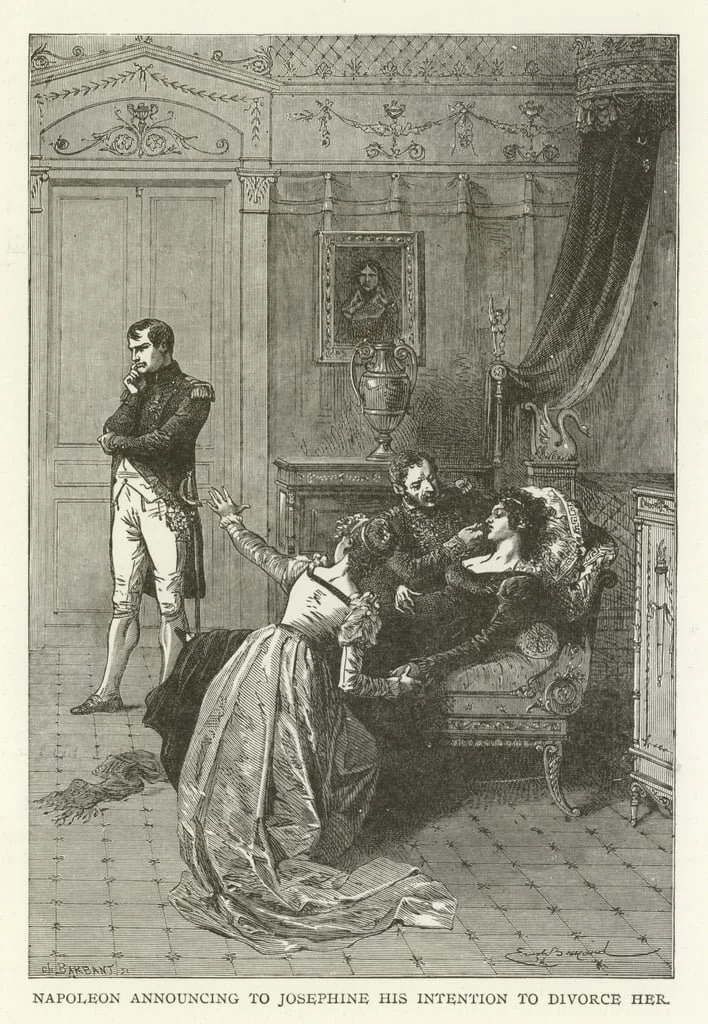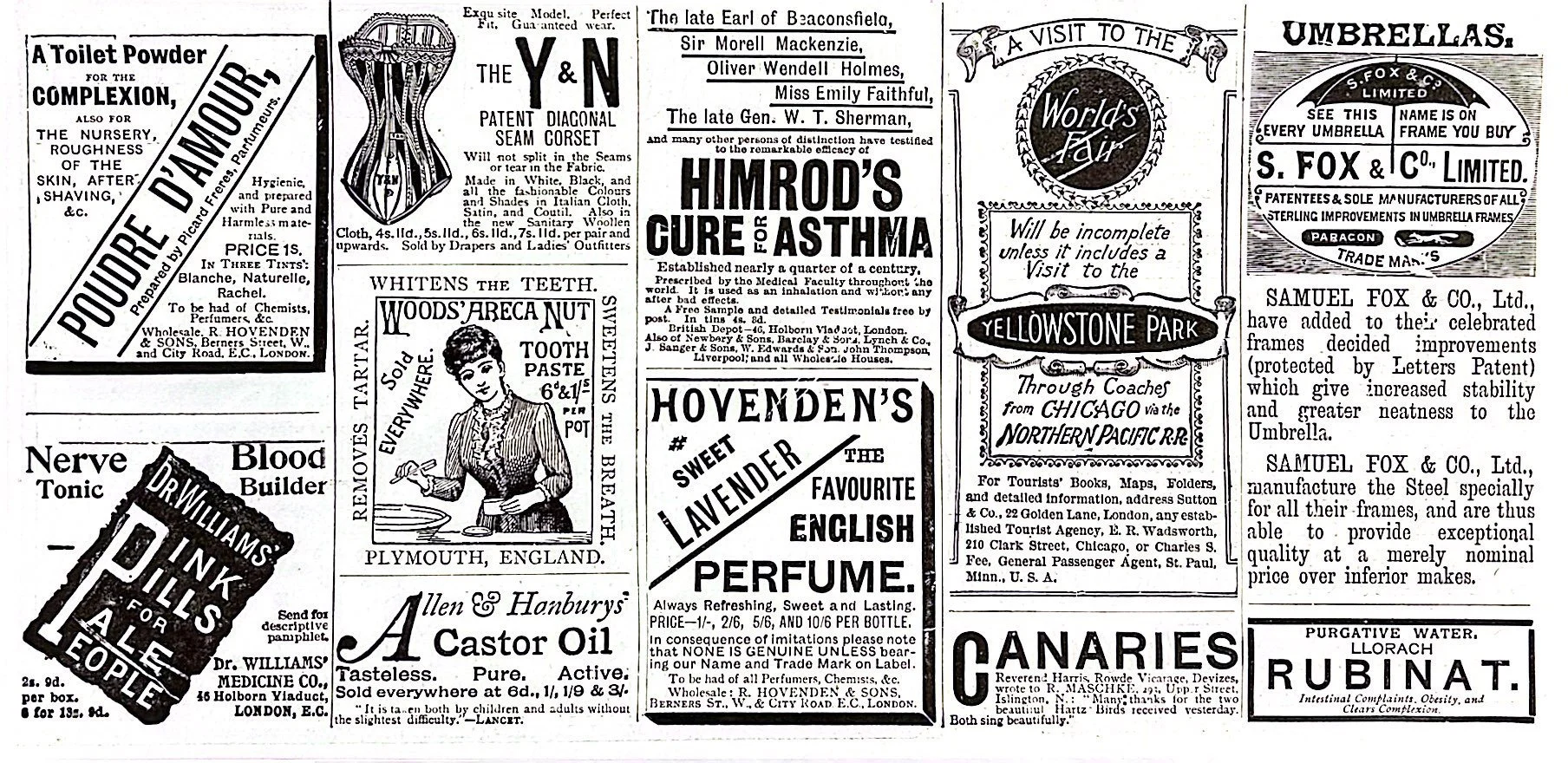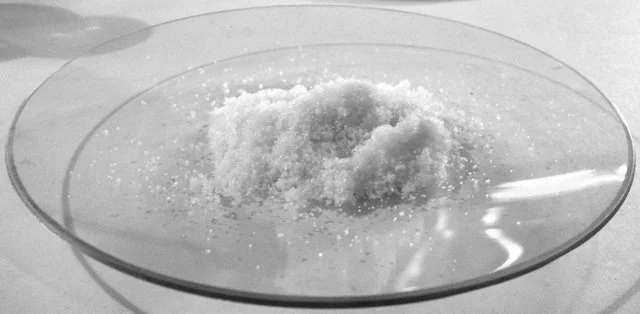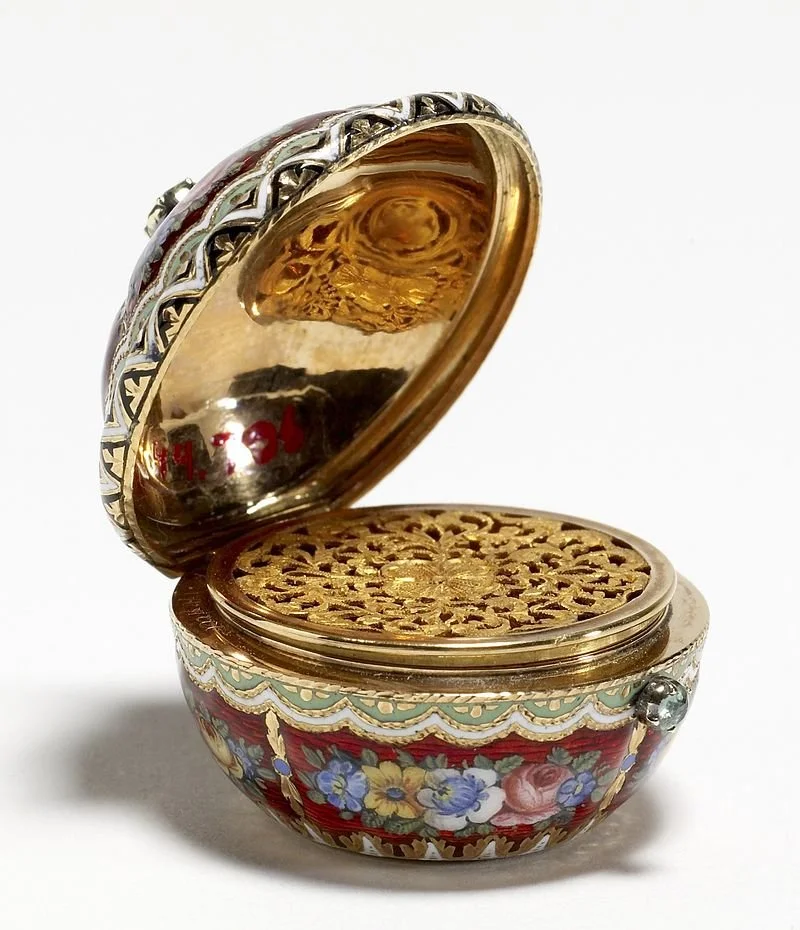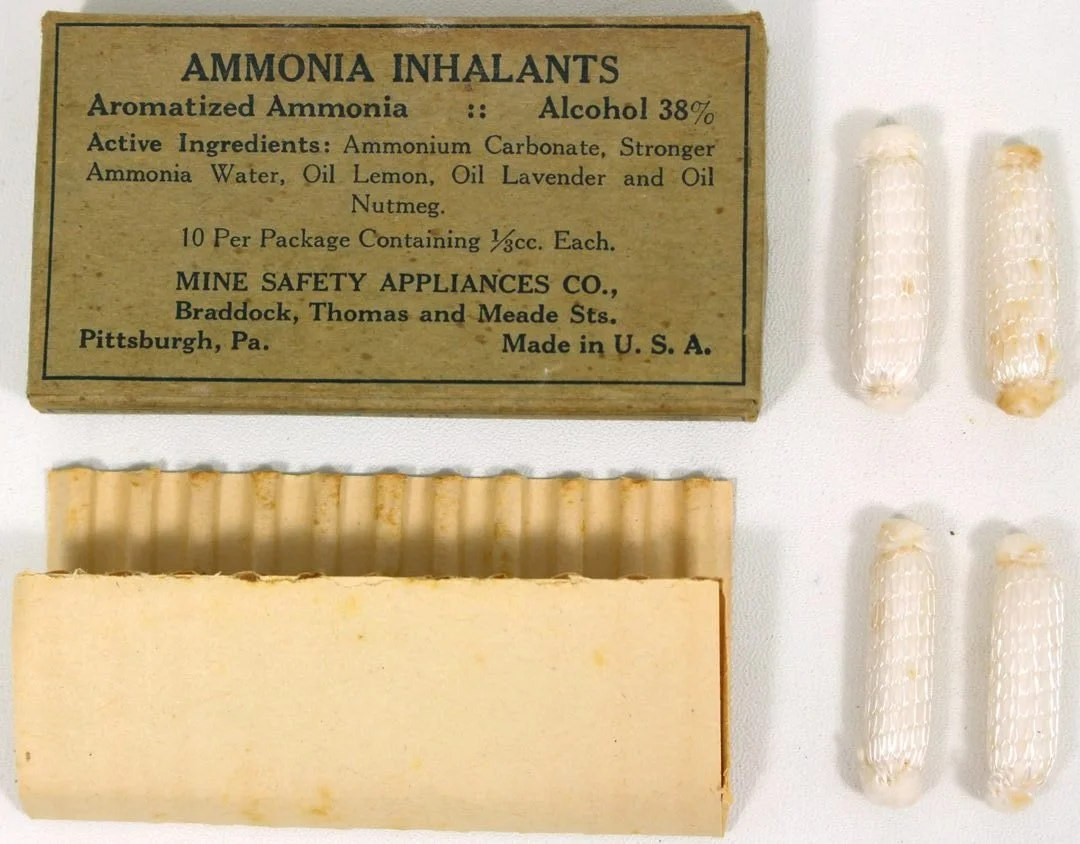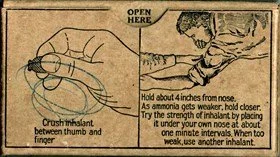Scents & Sensibility: Awakening the Fashionable History of Victorian-Era Smelling Salts
In the annals of Victorian-era remedies, wherein fainting fits and emotional tumult were hushed behind delicate fans, a curious elixir graced the delicate nostrils of society's finest, holding the power to revive the senses and stir the soul – none other than the esteemed smelling salts.
That was my best Jane Austen impression – how did I do?
Pick up a classic novel or tune into a period drama and you are bound to encounter a woman in the throes of a fainting spell. Such swooning is a recurring theme in much of 19th century literature – female characters faint repeatedly in Dickens’ Pickwick Papers, and who could forget Mrs. Bennet in Austen’s Pride and Prejudice, constantly retreating to her room for fear of fainting from stress due to her daughter’s elopement with the dastardly Mr. Wickham.
All in all, it seemed as if well-to-do ladies struggled to maintain consciousness when faced with strong emotions. Being privy to a shocking proposal, receiving a heartrending letter, or discovering a distressing piece of family history could all lead to an irrepressible urge to faint.
And while such depictions of women dropping like flies may be a literary exaggeration, it does reflect societal expectations. Fainting at the least hint of shock became one way that women could show their delicate and frail nature; to swoon was not only an accepted social cue, but also downright ladylike. Coupled with the prevailing corset fashion of the era, which shifted ribs, constricted lungs, and compressed organs, this created a perfect recipe for a social fainting phenomenon.
However, nearly as significant as the act of fainting itself was the method in which the victim may be gracefully revived. The familiar cry went out: “bring the smelling salts!” Someone would quickly oblige, and a little bottle would be hurriedly brought and gently waved under the afflicted individual’s nose until they regained consciousness, which seemed to be quite immediate.
But what was this remarkable substance that could effectively resuscitate a fainted victim?
The pungent odour emanating from the bottle was that of ammonia. In fact, the term “smelling salts” simply refers to various preparations of ammonia carbonate – a colourless crystalline solid.
And yes, there is a science to it! The fumes of ammonia gas are quite harsh – somewhat akin to the acrid smell of bleach. When held up to the nose, ammonia gas irritates the mucous membranes of the nasal cavity and lungs, thereby triggering an inhalation reflex. This alters an individual’s breathing pattern; as the muscles that control breathing work quicker to clear the airways and supply the brain with oxygen, respiratory flow rate and alertness are improved, thereby reversing the faint.
While smelling salts have been used since Roman times, it was not until the 18th and 19th centuries that portable preparations in specially designed bottles became a fashionable commodity. During this time, smelling salts combined with perfume, vinegar, or alcohol were infused into a sponge that was then housed within a decorative container with a pierced inner lid termed a vinaigrette.
Such receptacles were a common item in the reticules and handbags of Victorian women (and even the pockets of a few gentlemen). In fact, constables were sometimes known to carry a container of smelling salts for this purpose!
And, of course, a trusty bottle of smelling salts was sure to be found in a physician’s bag or medicine chest. Doctors employed smelling salts as a means of awakening patients who had experienced moments of unconsciousness as well as to rouse patients who were in a state of shock or stupor. In less common cases, they were used to treat various respiratory conditions and to revive women who had fainted from pain, anxiety, or exhaustion during childbirth. And then, with the advent of anesthesia in the mid-1800s, smelling salts became the main means of hastening patients’ return to consciousness following a procedure.
While the popularity and medical application of smelling salts diminishing in the 20th century due to advancements in modern medicine, they did become a common part of first aid kits during World War II; this lasted until the turn of the 21st century. These smelling salts typically took the form of a thin glass tube of ammonia with an outer layer of cotton and meshing; when the tube was crushed, the liquid was released onto the cotton, while the glass shards remained inside. This preparation ensured ease of use in emergency situations where quick revival was necessary.
However, despite the continued availability and occasional use of smelling salts, other methods for reviving patients, including intravenous medications and oxygen therapy, have become more common and effective.
So, there you have it – a glimpse into the intriguing history of smelling salts at a time when these aromatic elixirs played a vital role in medical practices and maintaining societal norms. From reviving fainting ladies to awakening patients from anesthesia, these unassuming little bottles of ammonia served an important role. While their prominence has waned, the legacy of smelling salts remains a charming reminder of a bygone era.
So, next time you catch a whiff of ammonia, take a moment to appreciate the humble yet powerful history of these fragrant revivers.
Works Consulted
The Advantages of Deliberation; Or, The Folly of Indiscretion. In Two Volumes. London, England: Robinson and Roberts, No. 25, Paternoster-Row, 1772.
Alessi, Anthony. “Improper Use of Smelling Salts a Growing Concern: Orthopedics & Sports Medicine.” UConn Health, February 27, 2018. https://health.uconn.edu/orthopedics-sports-medicine/2018/02/27/improper-use-of-smelling-salts-a-growing.
Austen, Jane, 1775-1817. 1996. Sense and Sensibility. New York, Dover Publications.
“Childhood Corsetry: The Development of Unnatural Body Standards From a Young Age.” Web log. Cornell Fashion and Textile Collection (blog), May 5, 2022. https://blogs.cornell.edu/cornellcostume/2022/05/05/childhood-corsetry-the-development-of-unnatural-body-standards-from-a-young-age/#:~:text=Late%2019th%20century%20%2F%20early%2020th,with%20both%20health%20and%20beauty.
“Corsets, Crinolines and Bustles: Fashionable Victorian Underwear · V&A.” Victoria and Albert Museum. Retrieved from https://www.vam.ac.uk/articles/corsets-crinolines-and-bustles-fashionable-victorian-underwear.
Cox, Daniel. Family medical compendium or directions for medicine chests: With remarks on Medicine & Surgery, by D. Cox .. Glocester, England: R. Raikes, 1790.
Dickens, Charles, 1812-1870. 1867. The Pickwick Papers. New York, Hurd and Houghton.
Dugan, Holly. The ephemeral history of perfume: Scent and sense in early modern England. Baltimore, Maryland: Johns Hopkins University Press, 2011.
Kim, Boram. “Faint or Feint?: Literary Portrayals of Female Swooning in the Eighteenth Century,” March 2014. https://s-space.snu.ac.kr/bitstream/10371/2391/3/englishstudies_v29_148.pdf.
King, Rebekah. “Smelling Salts,” 2012. http://eighteenthcenturylit.pbworks.com/w/page/70599154/Smelling%20Salts.
McCrory, P. “Smelling Salts.” British Journal of Sports Medicine 40, no. 8 (2006): 659–60. https://doi.org/10.1136/bjsm.2006.029710.
Schwarcz, Joe. “What Are Smelling Salts?” Office for Science and Society, July 10, 2017. https://www.mcgill.ca/oss/article/health-you-asked/what-are-smelling-salts.
Van Dijk, Nynke, and Wouter Wieling. “Fainting, Emancipation and the ‘Weak and Sensitive’ Sex.” The Journal of Physiology 587, no. 13 (2009): 3063–64. https://doi.org/10.1113/jphysiol.2009.174672.
“What Smelling Salts Do to Your Body.” Cleveland Clinic, June 27, 2023. https://health.clevelandclinic.org/smelling-salts/.
About the Author
Ava Penry (Summer Staff 2023)
Ava is a Master's student in the Anatomical Sciences program at Queen's University. With a keep interest in history and philosophy of health, she enjoys devoting a part of her week to public programming and collections archival at the Museum of Health Care. As an avid book reader, collector and enthusiast, Ava loves learning and sharing that passion for discovery with kids and adults alike through education programs.


